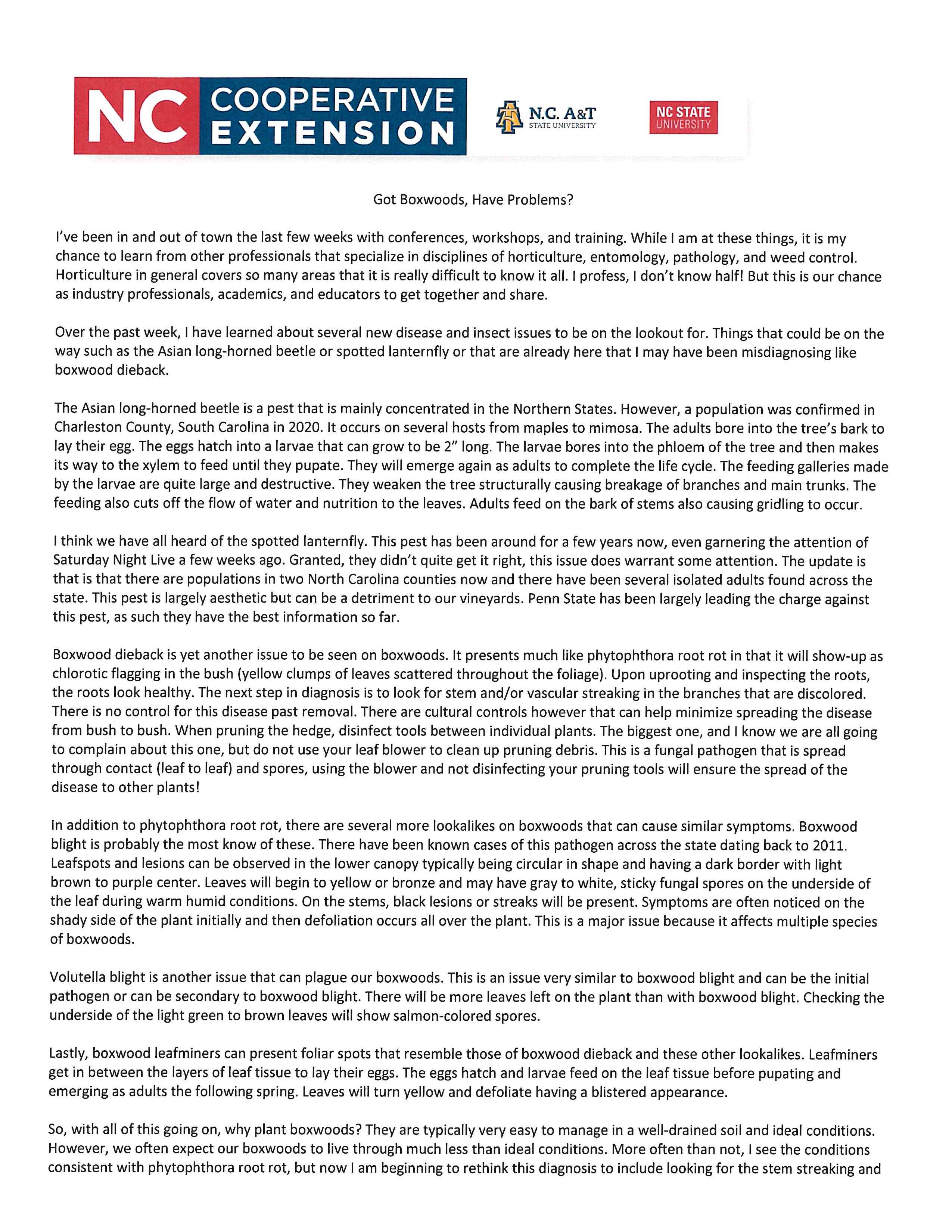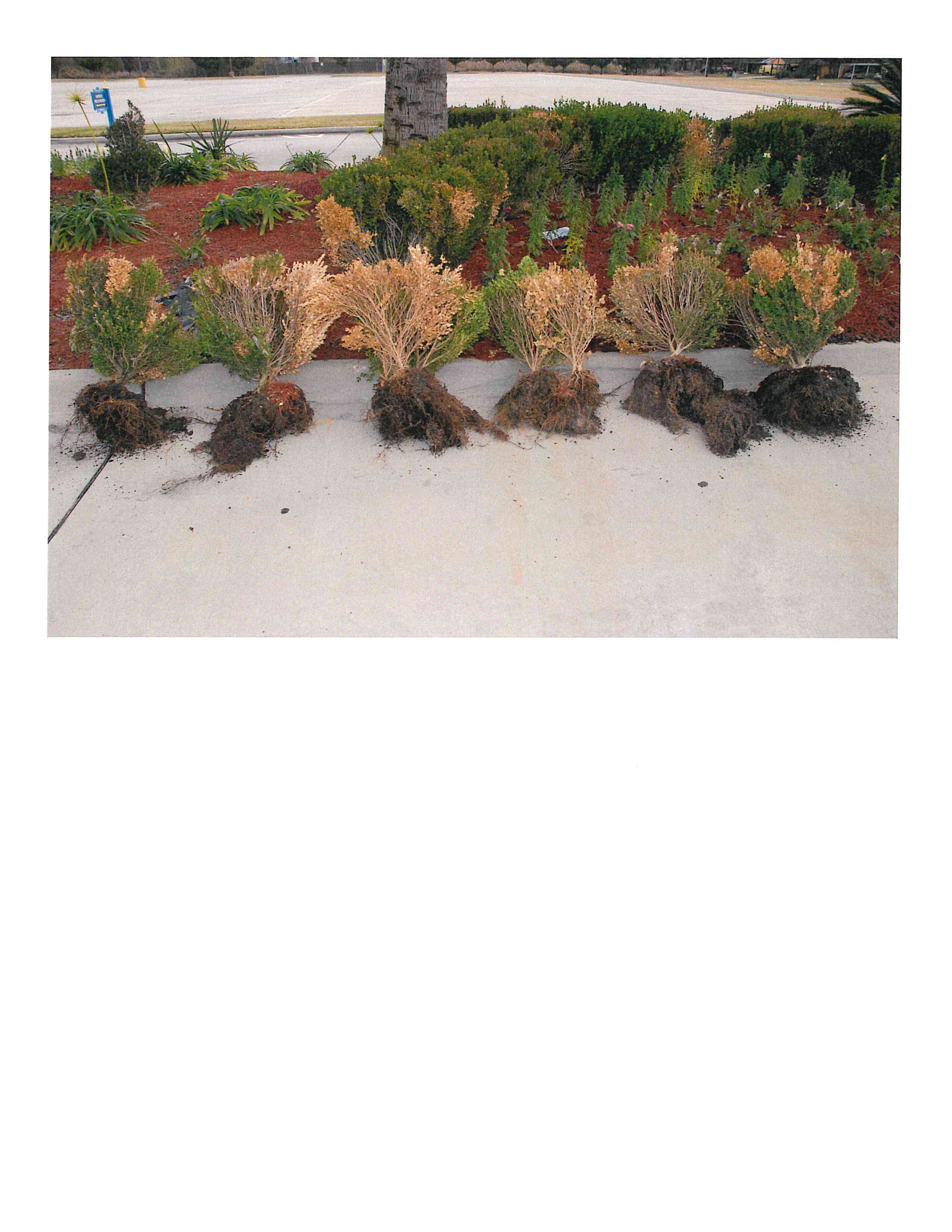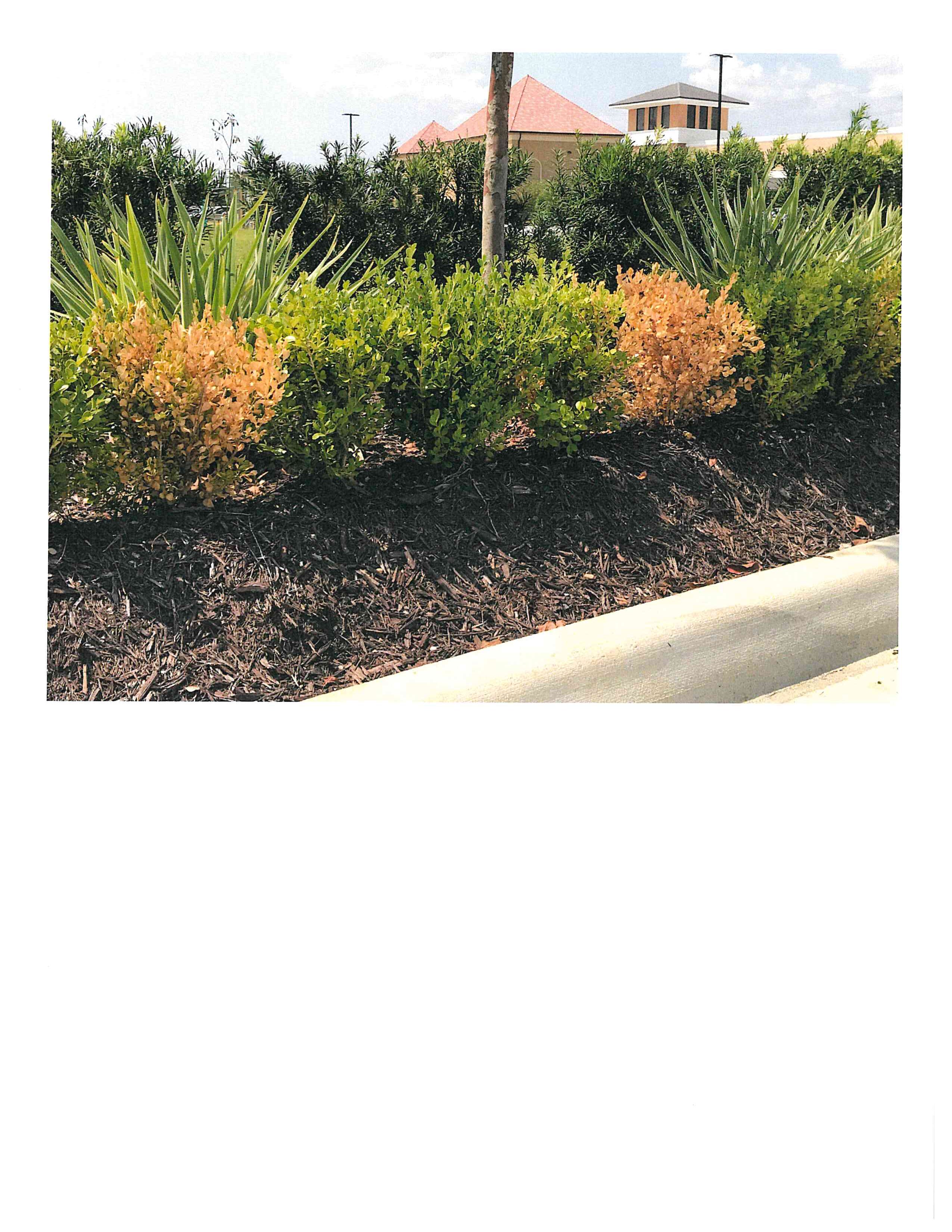November Horticulture News
go.ncsu.edu/readext?895221
en Español / em Português
El inglés es el idioma de control de esta página. En la medida en que haya algún conflicto entre la traducción al inglés y la traducción, el inglés prevalece.
Al hacer clic en el enlace de traducción se activa un servicio de traducción gratuito para convertir la página al español. Al igual que con cualquier traducción por Internet, la conversión no es sensible al contexto y puede que no traduzca el texto en su significado original. NC State Extension no garantiza la exactitud del texto traducido. Por favor, tenga en cuenta que algunas aplicaciones y/o servicios pueden no funcionar como se espera cuando se traducen.
Português
Inglês é o idioma de controle desta página. Na medida que haja algum conflito entre o texto original em Inglês e a tradução, o Inglês prevalece.
Ao clicar no link de tradução, um serviço gratuito de tradução será ativado para converter a página para o Português. Como em qualquer tradução pela internet, a conversão não é sensivel ao contexto e pode não ocorrer a tradução para o significado orginal. O serviço de Extensão da Carolina do Norte (NC State Extension) não garante a exatidão do texto traduzido. Por favor, observe que algumas funções ou serviços podem não funcionar como esperado após a tradução.
English
English is the controlling language of this page. To the extent there is any conflict between the English text and the translation, English controls.
Clicking on the translation link activates a free translation service to convert the page to Spanish. As with any Internet translation, the conversion is not context-sensitive and may not translate the text to its original meaning. NC State Extension does not guarantee the accuracy of the translated text. Please note that some applications and/or services may not function as expected when translated.
Collapse ▲November Horticulture News




Got Boxwoods, Have Problems?
I’ve been in and out of town the last few weeks with conferences, workshops, and training. While I am at these things, it is my chance to learn from other professionals that specialize in disciplines of horticulture, entomology, pathology, and weed control. Horticulture in general covers so many areas that it is really difficult to know it all. I profess, I don’t know half! But this is our chance as industry professionals, academics, and educators to get together and share.
Over the past week, I have learned about several new disease and insect issues to be on the lookout for. Things that could be on the way such as the Asian long-horned beetle or spotted lanternfly or that are already here that I may have been misdiagnosing like
boxwood dieback.
The Asian long-horned beetle is a pest that is mainly concentrated in the Northern States. However, a population was confirmed in Charleston County, South Carolina in 2020. It occurs on several hosts from maples to mimosa. The adults bore into the tree’s bark to lay their egg. The eggs hatch into a larvae that can grow to be 2″ long. The larvae bores into the phloem of the tree and then makes its way to the xylem to feed until they pupate. They will emerge again as adults to complete the life cycle. The feeding galleries made by the larvae are quite large and destructive. They weaken the tree structurally causing breakage of branches and main trunks. The feeding also cuts off the flow of water and nutrition to the leaves. Adults feed on the bark of stems also causing gridling to occur.
I think we have all heard of the spotted lanternfly. This pest has been around for a few years now, even garnering the attention of Saturday Night Live a few weeks ago. Granted, they didn’t quite get it right, this issue does warrant some attention. The update is that is that there are populations in two North Carolina counties now and there have been several isolated adults found across the state. This pest is largely aesthetic but can be a detriment to our vineyards. Penn State has been largely leading the charge against this pest, as such they have the best information so far.
Boxwood dieback is yet another issue to be seen on boxwoods. It presents much like phytophthora root rot in that it will show-up as chlorotic flagging in the bush (yellow clumps of leaves scattered throughout the foliage). Upon uprooting and inspecting the roots, the roots look healthy. The next step in diagnosis is to look for stem and/or vascular streaking in the branches that are discolored. There is no control for this disease past removal. There are cultural controls however that can help minimize spreading the disease from bush to bush. When pruning the hedge, disinfect tools between individual plants. The biggest one, and I know we are all going to complain about this one, but do not use your leaf blower to clean up pruning debris. This is a fungal pathogen that is spread through contact (leaf to leaf) and spores, using the blower and not disinfecting your pruning tools will ensure the spread of the disease to other plants!
In addition to phytophthora root rot, there are several more lookalikes on boxwoods that can cause similar symptoms. Boxwood blight is probably the most know of these. There have been known cases of this pathogen across the state dating back to 2011. Leafspots and lesions can be observed in the lower canopy typically being circular in shape and having a dark border with light brown to purple center. Leaves will begin to yellow or bronze and may have gray to white, sticky fungal spores on the underside of the leaf during warm humid conditions. On the stems, black lesions or streaks will be present. Symptoms are often noticed on the shady side of the plant initially and then defoliation occurs all over the plant. This is a major issue because it affects multiple species of boxwoods.
Volutella blight is another issue that can plague our boxwoods. This is an issue very similar to boxwood blight and can be the initial pathogen or can be secondary to boxwood blight. There will be more leaves left on the plant than with boxwood blight. Checking the underside of the light green to brown leaves will show salmon-colored spores.
Lastly, boxwood leafminers can present foliar spots that resemble those of boxwood dieback and these other lookalikes. Leafminers get in between the layers of leaf tissue to lay their eggs. The eggs hatch and larvae feed on the leaf tissue before pupating and emerging as adults the following spring. Leaves will turn yellow and defoliate having a blistered appearance. So, with all of this going on, why plant boxwoods? They are typically very easy to manage in a well-drained soil and ideal conditions. However, we often expect our boxwoods to live through much less than ideal conditions. More often than not, I see the conditions consistent with phytophthora root rot, but now I am beginning to rethink this diagnosis to include looking for the stem streaking and taking a good look at the roots of these plants. This is especially true if the symptoms are being seen in newer plantings. I think many of our issues are result of cultural management mistakes. Knowing the particular culture of a plant can go a long way in helping to keep that plant healthy. To learn more about the plants you have in your landscapes or to research plants prior to planting, visit our Extension Gardener Plant Toolbox at plants.ces.ncsu.edu.
If you are having trouble with growing in your home landscape, call the Extension office at (252)946-0111 or email Gene Fox at gene_fox@ncsu.edu. If you have a plant that you are unable to identify or would like to know more about the plants in your landscape, let’s talk! Like an old family doctor, I do house calls if we can’t figure out your problem!
Coyle, Dave. 2021. “Asian Longhorned Beetle.” Home & Garden Information Center | Clemson University, South Carolina. Retrieved
October 24, 2022.
Singh, R., & Doyle, V. P. (2017). “Boxwood dieback caused by Colletotrichum theobromicola: A diagnostic guide.” Plant Health
Progress, 18(3), 174-180. doi:10.1094/PHP-04-17-0024-DG
Villani, Sara. 2018. “Winning the Battle Against Boxwood Blight and Other Diseases of Woody Ornamentals.” Chatham County Center. Retrieved October 24, 2022.
Gene Fox



